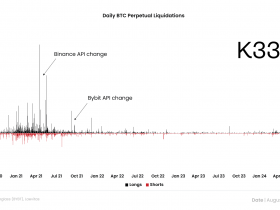
Stablecoins have transformed financial access in emerging markets and have become essential tools for millions seeking stability in volatile economies, according to a recent research report.
The report, Stablecoins: The Emerging Market Story, was sponsored by Visa and developed in collaboration with Allium Labs and Castle Island Ventures. It revealed that stablecoins have evolved from niche crypto tools to mainstream financial assets.
According to the report, the use of stablecoins has increased dramatically in countries such as Brazil, India, Indonesia, Nigeria and Turkey, where traditional banking systems often struggle to meet users’ needs.
Daily financial tool
The report noted that stablecoins initially served as a tool for traders and exchanges to settle transactions in the crypto world. However, its use quickly expanded to meet the daily needs of users in emerging markets.
The survey also highlighted that stablecoins, especially Tether (USDT), have become the most trusted digital asset due to their broad network effects and established liquidity.
About 47% of survey respondents use stablecoins to hold digital dollars as an alternative to unreliable local banking systems, while 43% of respondents prefer stablecoins for more efficient currency conversions.
The report estimated that stablecoins settled $2.6 trillion in transactions in the first half of 2024, with more than 20 million blockchain addresses conducting stablecoin transactions every month. This rapid growth reflects the increasing appeal of stablecoins for various everyday financial activities, and not just for crypto trading.
Security against economic uncertainty
The report highlighted that stablecoins played a crucial role in promoting financial inclusion in emerging markets, especially in countries where access to traditional banking remains limited or unreliable.
In regions with high inflation or volatile local currencies, such as Argentina and Venezuela, stablecoins made it possible for individuals to hold digital dollars, providing a stable alternative to local currencies. This offered users the opportunity to preserve the value of their savings without the need for a traditional bank account, which was often inaccessible or unreliable.
Stablecoins also helped bridge the financial gap for those who did not have access to USD-based banking systems. In countries like Nigeria, where banking infrastructure struggled to provide easy access to US dollars, stablecoins allowed people to store value, make payments and conduct cross-border transactions more efficiently.
This opened up financial opportunities for millions who would otherwise be excluded from stable and secure financial systems, making stablecoins a powerful tool for financial inclusion in the developing world.
Growth is expected to continue
While the adoption of stablecoins in some countries raised concerns about “crypto-dollarization,” the report showed that stablecoins would play an even bigger role in global finance.
According to the survey, 72% of respondents expected to increase the use of stablecoins in the coming year. Growth has been driven by the efficiency, speed and accessibility of stablecoins for cross-border payments, payroll and remittances, especially in areas where traditional financial systems have lagged behind.
The report concluded that stablecoins have firmly established themselves as a viable alternative to traditional banking systems, offering emerging market users a secure and stable way to manage their finances. As the regulation of stablecoins developed globally, their role in everyday financial transactions was expected to increase.







Leave a Reply